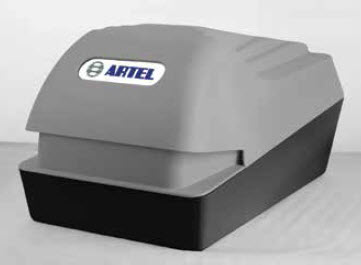Problem:
In virtually all research processes in which analytes and reagents are mixed in microplates,
precise information on the starting volume in each plate well is critical to the accuracy and success of
the process, as well as the results derived from it. While effective tools for measuring the dispensing of liquid volumes by pipettes have been available for years, accurate volume measurement of what is
actually in the plate at a given time has been a challenge.
Scenarios where this presents a roadblock include compound library management, compound dilution and plate replication, and high-throughput screening. In applications where samples have been stored for periods of time, environmental factors and process errors may affect the plate volume, and it is not uncommon to find that a storage plate contains less volume than expected.
 The Artel VMS measures liquid or solid volumes in microplate wells.Solution:
The Artel VMS measures liquid or solid volumes in microplate wells.Solution:
The new Artel VMS™ directly measures the actual volume of liquid or solid contents in each well of 96- or 384-well microplates using pressure in a confined microplate well measured by eight highly precise and accurate pressure sensors. By sealing and pressurizing individual microplate wells and pumping in a known amount of air, the VMS determines the volume of the contents regardless of the shape, material, or color of the well.
Users calibrate the system by measuring the pressure in each of the empty wells of their chosen plate type, followed by measuring those same wells filled with precision metallic cylinders of known volumes. The VMS software performs a linear interpolation on the set of data points, producing a series of eight linear curves used to calibrate each pressure sensor. Sample volumes are then determined using pressure measurements from the test wells and the corresponding curve for that sensor. The technology is applicable to solid samples in addition to all types of liquids.
The pressure-based volume determination method requires minimal setup, no consumables, and can be integrated into existing automation processes. It can be used at any point in the experimental process.
The VMS is suited for any lab transferring rare and expensive samples and reagents, including compound management and crop science laboratories, where the known volume present in a plate is a critical piece of information. In these settings, samples may be taken in and out of storage multiple times. Using DNA extraction as an example, measuring the volume of starting materials helps determine the correct amount of reagent necessary to perform the extraction.
Gathering volume information from the individual wells of microplates in an established workflow can now be quickly and effectively completed using this system. This information can be utilized for quality control of dispensed plates or verification of pipetting steps in multistage reactions, helping laboratories maintain productivity and data integrity.
For more information, visit http://www.artel-usa.com
